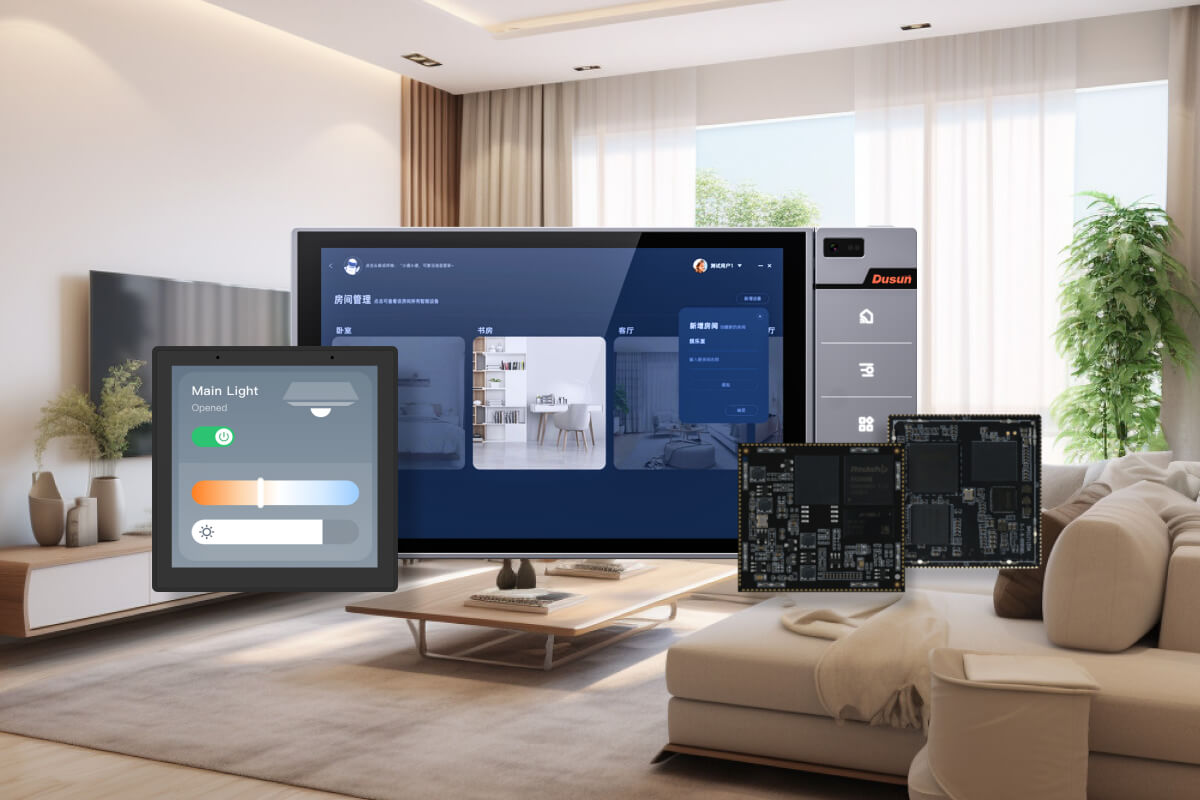IoT connectivity with the IoT gateways unlocks the true potential of smart IoT solutions, creating an interconnected ecosystem that empowers users with unprecedented levels of control and intelligence.
Significance of the Suitable IoT Connectivity Selection
It is extremely important to choose the best-suited IoT connectivity option for a particular application. The right choice will ensure a cost-effective and high-performing IoT solution, interoperability, accessibility, and enhanced user experiences.
IoT manufacturers have an extensive range of connectivity options. Choosing the right IoT connectivity is vital as it directly impacts the success and competitiveness of their products in the rapidly evolving IoT market.
Selecting improper IoT connectivity can lead to various issues, including slow data transmission, limited range, increased power consumption, scalability problems, and poor user experience. However, an appropriate IoT connectivity option ensures that their IoT-enabled device can efficiently communicate with other devices and platforms, providing smooth data exchange and enhancing overall performance.
Factors to Consider in Ideal IoT Connectivity Selection
The selection of IoT connectivity is the most crucial element in the success of any IoT solutions. LoRaWAN is a proper choice for IoT connectivity for a remote environment monitoring system, while Bluetooth may not be a good choice in distant locations. When choosing the suitable IoT connectivity for your specific use case, it’s essential to consider the following top five factors.
Range and Coverage
Evaluate the coverage area needed for your IoT deployment. Different applications may require connectivity that spans short distances within a single room or long-range coverage that extends over several kilometers for rural or outdoor deployments. Consider protocols like Wi-Fi for indoor applications and LoRaWAN for long-range outdoor deployments.
Read further: what is LoRaWAN gateway?
Data Rate and Throughput
Data rate and throughput are critical considerations in IoT connectivity. Some applications require high data rates and low latency for real-time processing, while others can function with lower data throughput.
The downlink applications that collect data from sensors or beacons may involve smaller amounts of data, making low-bandwidth options like Zigbee or LoRaWAN suitable. Higher data rates become essential in uplink scenarios, where devices transmit data to the cloud or central server. In such cases, connectivity options like Wi-Fi, Ethernet, or LTE 4G offer higher bandwidth, ensuring smooth and rapid data transmission.
Moreover, firmware OTA (Over-the-Air) updates are essential for IoT device management, allowing remote and wireless distribution of software improvements, bug fixes, and security patches. Higher data rates and throughput also facilitate faster transfer of firmware updates, reducing the time devices need to receive the latest enhancements and minimizing the risk of data loss or interruptions.
Bandwidth
Bandwidth is a crucial aspect of IoT connectivity that refers to a network’s capacity or data transfer rate. It determines how much data can be transmitted within a specific time frame.
Higher bandwidth is essential for applications that involve large amounts of data or require real-time processing. For example, Facial recognition, streaming video, video conferencing, or transmitting high-resolution images demand considerable bandwidth to ensure smooth and uninterrupted data flow.
On the other hand, certain IoT applications may not require high bandwidth. For instance, a lower-bandwidth connection may adequately support simple sensor data transmission or low-bandwidth telemetry data.
Cost and Compatibility
It is crucial to consider both cost and compatibility with your current system. Investing in entirely new devices may not always be feasible or practical. Some businesses might find that their existing systems can be upgraded to support IoT connectivity, and in such cases, utilizing an IoT gateway can be advantageous.
The smart gateway acts as a bridge between the existing infrastructure and IoT devices, facilitating a seamless integration without the need for extensive changes or costly replacements of legacy equipment.
Power Consumption
Consider the power requirements of your IoT devices, especially in remote areas where frequent maintenance might add up to significant overhead costs. Power-efficient devices are a smart choice here as they help to minimize the frequency of battery replacements, reduce operational costs and ensure prolonged operation.
Additionally, when evaluating power efficiency, it’s crucial to take into account various power parameters, including idle power, Rx/Tx power, power save mode, and power supply requirements. These parameters determine how much power the solution demands during idle, data transmission and reception, and when using power-saving features.
Bluetooth, Zigbee, and LoRaWAN are known for their low power usage, making them suitable for battery-operated IoT devices in remote or challenging environments.
Deployment Location
IoT connectivity options may perform differently in various environments, such as indoor, outdoor, rural, or urban settings. Factors like signal propagation, interference, and coverage area should be evaluated based on the specific deployment location to ensure reliable and efficient communication between IoT devices and the network.
For instance, connectivity options like Wi-Fi may be more suitable for indoor applications. At the same time, LoRaWAN is better suited IoT connectivity option for long-range outdoor deployments in remote areas.
Mobility
Some applications, such as asset tracking and wearable devices, require continuous connectivity even when devices are moving. Cellular technologies like 4G and 5G are well-suited for such scenarios, providing wide-area coverage and seamless handoff between base stations. Prioritizing solutions that offer reliable and continuous connectivity for mobile devices is essential for effective IoT deployments.
Latency
Latency is an important consideration in IoT connectivity, referring to the time delay in data transmission and reception between devices and the cloud. Real-time applications like industrial automation, self-driving cars, and healthcare require low latency for optimal performance and safety.
It can be crucial in time-sensitive scenarios where even milliseconds matter, and high latency can lead to data loss resulting in fatal incidents. Hence it is vital to consider the inherent latency of different IoT connectivity options to ensure optimal performance for time-sensitive applications.
Security
Data security is a critical aspect of IoT deployments. Look for a connectivity protocol that provides robust encryption and authentication mechanisms to protect sensitive data and safeguard the integrity of your IoT ecosystem.
Scalability
Anticipate future growth and ensure the chosen connectivity option can accommodate more connected devices. Scalable protocols like Zigbee are well-suited for large-scale IoT deployments, allowing you to expand your network seamlessly.
Top Seven IoT Connectivity Options
Each IoT connectivity option presents a unique range of values and weaknesses, and the optimal selection revolves around the precise demands of your IoT application. Carefully assessing these variables empowers you to make a good selection that matches your project’s requisites and results in the successful implementation of your IoT solution. The following five are our recommendations in this regard.
Wi-Fi is perfect for smart buildings
Wi-Fi is the ideal IoT connectivity choice for the smart automation of homes, offices, and commercial buildings due to its high data rates and low latency. It allows real-time control and monitoring of smart devices. In most cases, our homes are already equipped with the necessary Wi-Fi infrastructure, thus making it easier to deploy smart home networks.
Wi-Fi’s main disadvantage is its higher power consumption which can affect battery-operated devices’ lifespan. It may face Interference as many other protocols and devices work on similar 2.4 GHz frequency bands. The congested Wi-Fi environments may also impact communication and signal reliability.
Ethernet supports large volumes of data transfer for industrial IoT
Ethernet is widely used in industrial automation and monitoring due to its reliability, high data rates, and stability. It provides a wired connection that can handle large volumes of data and real-time communication, making it ideal for critical industrial processes and control systems.
Power over Ethernet (PoE) solution is a convenient and efficient option for powering IoT devices in industrial applications. Dusun IoT offers DSGW-020 PoE Zigbee Gateway with PoE Switch. It not only connects via Ethernet cables but also receives power through the same cable, simplifying installation and reducing the need for additional power sources.
The main disadvantage of Ethernet is its reliance on physical cables, which can limit the flexibility of deploying sensors and devices in certain industrial settings. The cable installation and maintenance also add to the overall deployment cost.
LoRaWAN offers low-power operation
LoRaWAN is well-suited for smart agriculture applications, particularly in rural and remote areas, where long-range communication and low-power operation are essential. It allows farmers to monitor and control their fields and livestock efficiently, even in locations with limited infrastructure.
LoRaWAN is a low-cost solution and a single LoRaWAN gateway can connect up to 1000 sensors, providing extensive coverage over large areas without the need for multiple gateways. This scalability makes it a highly efficient and economical option for agricultural IoT deployments
The major disadvantage of LoRaWAN is its limited data rate, which makes it less suitable for applications requiring high-bandwidth data transmission.
Bluetooth for Healthcare IoT
Bluetooth is the best-suited IoT connectivity option for healthcare IoT applications, especially for wearable devices and medical sensors. Its low power consumption, short-range connectivity, and ability to pair quickly with devices make it ideal for continuous patient monitoring and seamless data transmission.
Bluetooth’s limited range can be a drawback for healthcare IoT deployments that require communication over larger areas. Additionally, interference from other Bluetooth devices may impact performance in high-density environments.
Cellular is the ultimate choice for a wide area smart city
Cellular connectivity, particularly 4G and 5G, is well-suited IoT connectivity for smart city deployments due to its wide-area coverage, high data rates, and reliability. It can support many smart city applications, including traffic management, public safety, waste management, and environmental monitoring.
Cellular IoT connectivity’s main disadvantages are higher power consumption, making it less ideal for battery-operated smart city devices. It may also require a subscription for data plans.
Z-wave adds up greater penetrations power
Z-Wave is well-suited for IoT connectivity for smart farming applications, especially in rural and agricultural settings. It operates in the sub-GHz frequency band, offering greater range and penetration through obstacles, making it ideal for large farms. Z-Wave’s low-power communication ensures energy-efficient operation, making it suitable for battery-operated devices in remote areas.
Z-Wave has a lower data rate than other protocols like Wi-Fi, limiting the amount of data that can be transmitted simultaneously.
Zigbee for Smart Energy Management
Due to its low power consumption, Zigbee is an excellent IoT connectivity choice for smart energy management applications. It is suitable for battery-operated devices such as smart meters and energy monitoring sensors. It allows reliable and efficient communication between various smart energy devices within a localized network. Zigbee’s mesh network topology enables devices to relay data through neighboring nodes, creating a robust and resilient network even in challenging environments.
Zigbee’s mesh networking can add complexity to network deployment and management, requiring careful planning to avoid congestion and data bottlenecks.
Key Takeaways
- IoT connectivity is important to get the full benefits of smart solutions and real-time insights.
- Selection of the right IoT connectivity results in accurate data transfer, high performance, and scalability.
- Improper IoT connectivity can lead to slow data transmission, limited range, increased power consumption, scalability problems, and poor user experience.
- The right IoT connectivity will put you ahead of your competitors and helps you to succeed in the dynamic IoT market.



















